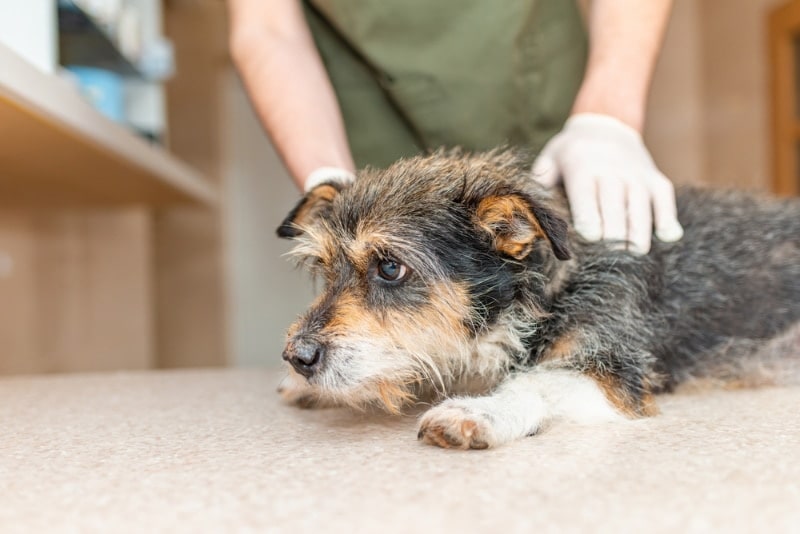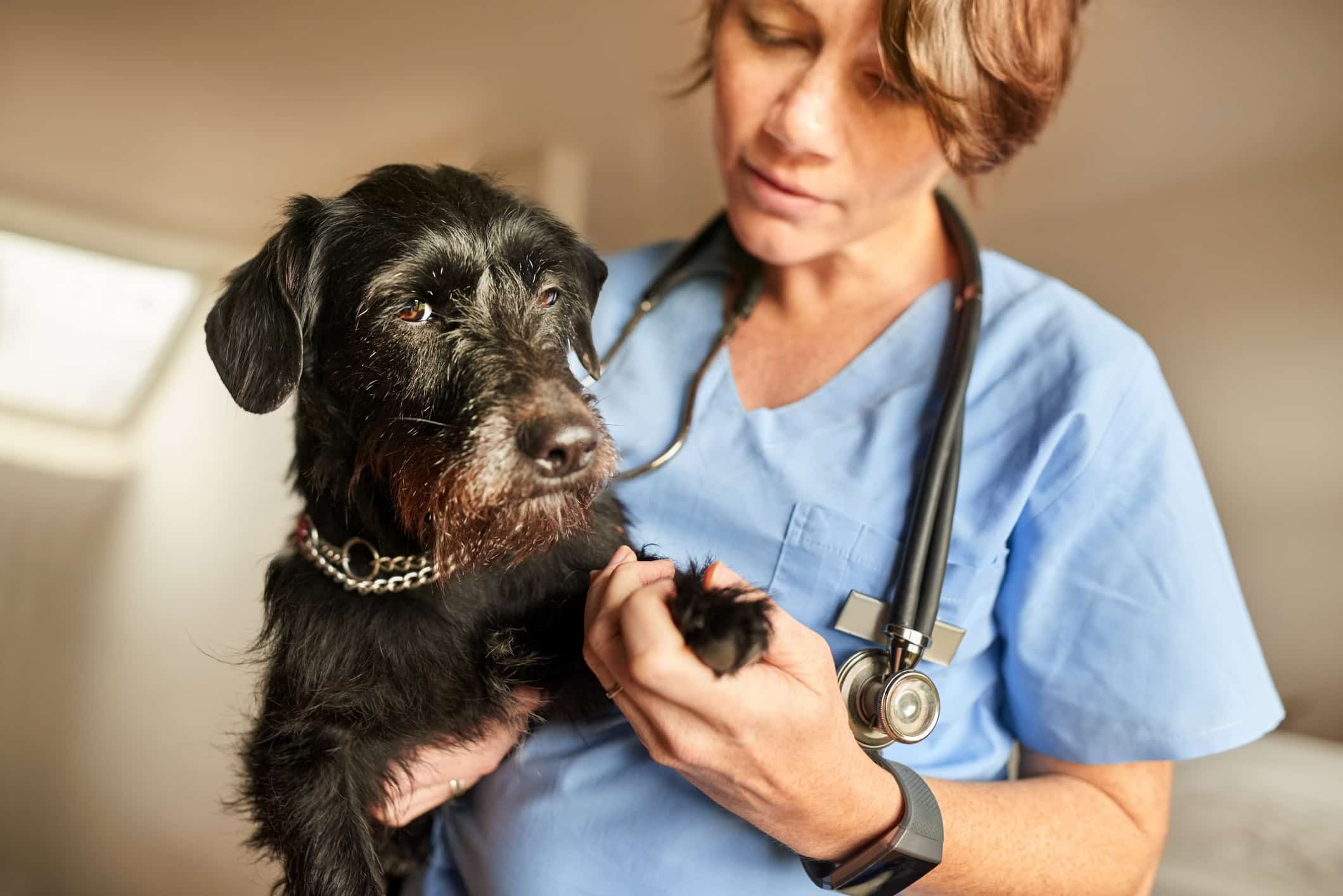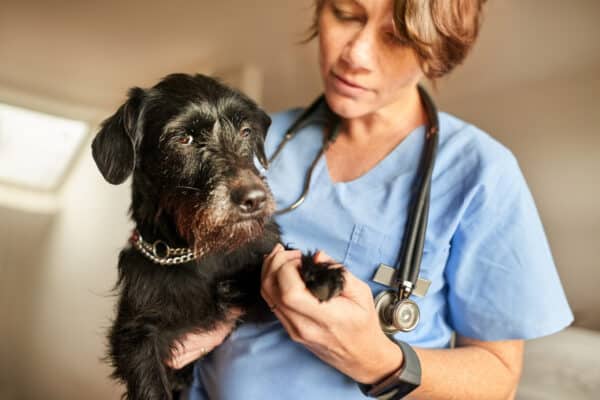Euthanasia is one of the most challenging aspects of my job. It is emotional in the extreme. To my surprise, performing euthanasia has actually become harder as I have gained experience over the years. Maybe it’s because I have changed as a person. Maybe it’s because my pal Buster is getting older and I realize that his time may not be too far off. It’s the opposite of compassion fatigue — the more I do it, the more compassion I feel. I am not alone in this matter. I and most of my friends and colleagues entered the profession hoping we would become inured to the task, but instead we have found that it grows only more challenging with time.
I work as an emergency veterinarian. This means that relative to general practitioners I euthanize more animals during an average shift. When I was in general practice I thought three euthanasias in a day was extreme. I wish I could say that now. However, emergency room euthanasias have some advantages (for the vet) over family-practice euthanasias. In the emergency room I rarely euthanize dogs with whom I have long-term relationships. As a family vet, I had known some of my patients for their whole lives.

I also can refuse to perform so-called “convenience euthanasia,” those requested by people who don’t want their dogs anymore for various reasons unrelated to the animals’ health. People rarely take their dogs to the emergency room when they decide they no longer want them, or when life circumstances make ongoing dog ownership impossible for them. Some veterinarians are forbidden by their employers to say no to euthanasias, and in the current job market most vets can’t afford to go against their bosses’ will.
My boss, however, allows me to exercise discretion. If I am not comfortable euthanizing a dog, I don’t have to do it. Therefore, those few people who come to my office seeking convenience euthanasia instead receive counseling on finding new homes for their dogs. I don’t fool myself, however — I know that many of them simply go elsewhere to put their dogs to sleep. I feel very sorry for the vets at those other places who have to do the dirty work that I refuse to do.
I am sorry to say that I do occasionally perform behavior euthanasias in dogs. There is one (and only one) behavioral problem in dogs that is sufficiently serious to warrant the procedure: aggression, especially against people. My preference, of course, would be not to euthanize aggressive dogs. Traning and behavior modification are superior choices. But if an aggressive dog lives with a child and the owners fear for the child’s safety, then my hands are tied — ethically and legally. I could never live with myself if such a dog mauled or killed a child.

The overwhelming majority of the dogs that I euthanize are sick and suffering. For these dogs, euthanasia is the best option. I consider euthanasia when two conditions are met. First, the dog must be suffering. Second, euthanasia must be the only realistic way to eliminate the suffering. Ending suffering makes the task less difficult, but make no mistake: It is never easy.
For me, the most emotionally challenging canine euthanasias involve larger dogs who “go down.” A combination of arthritis, degeneration of the nervous system, muscle atrophy, and often obesity makes it impossible for them to walk or even stand. They are too large to be carried. Their quality of life is poor, but they remain alert and often very friendly.
Also especially challenging is putting down dogs who live in families with children or teenagers. These young people have known their dogs their whole lives, and they might be young enough that the euthanasia is their first major life trauma.
People often wonder what to expect during euthanasia. There are many different protocols, so the experience may be different with different vets. I have developed a protocol that is designed to be as humane as possible.
Euthanasia drugs generally are given intravenously. Therefore the first step for most of my patients is to place an intravenous catheter. This procedure is well tolerated by most dogs, and it isn’t significantly painful. It allows me to avoid puncturing the skin with any needles during the procedure itself.

However, if a dog displays any stress or anxiety during catheter placement, I immediately discontinue the procedure and a administer a sedative. If the sedative causes sufficient relaxation to allow for the placement of the catheter without stress, then the catheter is placed. If not, then no catheter is placed.
I perform euthanasia as a two-step process. The first step is premedication. Dogs with catheters receive a drug called propofol that causes them to fall asleep within one minute. Dogs without catheters receive an under-the-skin injection of a drug called Telazol, which takes effect in five minutes to 10 minutes. Either way, the dogs aren’t aware of what happens next.
The act itself is performed with an intravenous overdose of an anesthetic called pentobarbital. It takes effect in less than one minute. Some dogs lick their lips or sigh as it takes effect. Most dogs do not close their eyes. Some individuals lose bowel or bladder control after the procedure. A small number of dogs take a few short breaths after they pass away.
Then it is over. If the owners are present for the procedure, I leave the room to allow them to grieve privately.
Most owners elect to have their pets cremated after euthanasia. Cremation services offer individual cremations, with the ashes usually returned in a cedar box. Group cremations also are available, with the collective ashes usually buried or scattered. A smaller number of owners elect burial without cremation. Some elect to take their deceased pets home.
Even writing about euthanasia is very emotionally draining for me. I worry about my trend of experiencing ever greater emotions during euthanasias. At the rate I’m going, they may eventually become impossibly hard.
Featured Image Credit: AJ_Watt/ Getty Images









